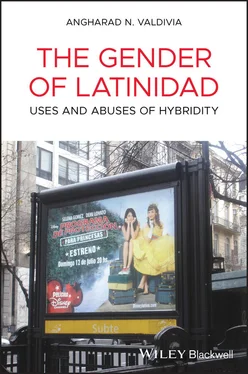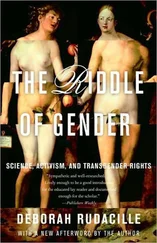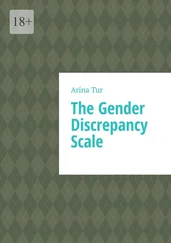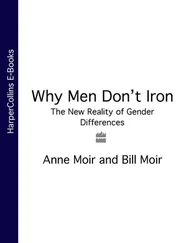Contemporary scholars continue to contribute to this language of cultural tension, collision, mixture, erasure, and displacement. Thus, Mary Louise Pratt uses “zones of contact,” Gloria Anzaldúa speaks of “nepantla,” Homi Bhabha writes of “mimicry” and a “third space,” and Nestor García Canclini uses “hybrid cultures.” While its application to population and cultural form is undeniable, there are still many who caution against the wholesale adoption of the concept of hybridity. Foremost among their concerns is the depoliticizing potential of accepting that there is an inevitable mixture and hybridity in everything and that if everything and everyone is hybrid then there is no theoretical validity to the term. Sommer (1991) worries that the deployment of hybridity duplicates national unity movements that seek to rewrite the violent and uneasy history of many Latin American nations. Others are concerned that concepts such as hybridity, mestizaje, syncretism, miscegenation, and assimilation are being used carelessly and interchangeably, flattening historical, geographical, and cultural specificity. Shohat warns that a “celebration of syncretism and hybridity per se, if not articulated in conjunction with questions of hegemony and neocolonial power relations, runs the risk of appearing to sanctify the fait accompli of colonial violence” (1991, p. 109). When coupled with a critical assessment of hegemonic relations, the concept is foremost a rejection of essentialist notions, either of gender or of ethnicity and race, as well as an acknowledgment that there is no purity to be found at the level of culture, the body, blood, or DNA.
Since Latina/os represent an instance of radical hybridity, drawing the boundaries around this ethnic group proves to be most challenging. Focusing on Latina/o television, Levine (2001), drawing on Naficy (1993), reminds us that hybridity is unstable and uncomfortable. Not only is it verifiably evident that cities are not the sites of national (let alone ethnic or class) purity – Miami is not purely Cuban American, Los Angeles is not purely Mexican American, New York is not purely Puerto Rican – but also the in‐between space (the Midwest, the South, etc.) is populated by fast‐growing heterogeneous Latina/o populations that are, in turn, reproducing across the ethnic and racial spectrum. Yet, a range of Latina/o Studies scholars, such as Fusco (1995) and Lugo (2000), remind us that it is far easier for cultural forms to cross borders than it is for human beings, for whom hybridity is often a wrenching lived experience. The lived experience of Latina/o bodies remains a hybrid one, full of ambivalence, tension, and pain despite celebratory and messianic messages of the joys and pressures of globalization. Whereas music, food, and style may cross borders unchecked, bodies are continuously inspected, even after legal and successful border crossings, as Latina/os remain the eternal outsiders within the US political psyche and system. Against this context, media strives to portray and reach the Latina/o audience.
Applying hybridity to US Latinidad and mainstream popular culture must rely on a combination of both versions and take up inherent tensions in locating the concept of US Latina/o within a nation while simultaneously acknowledging that Latinidad cannot be contained by national boundaries and is influenced by hybrid cultures and populations. Historically, at least as far back as the 15th century, Latin American populations were already hybrid, with a mixture of indigenous and settler colonialists, in both South and North America. Therefore, hybridity is not new to Latinidad. Indeed, hybridity may be the most authentic element of US Latina/o culture. Considerations of cultural mixing, as well as of textual hybridity, are inextricably entwined in the commodification of Latinidad. Throughout my work, I draw on the canonical writings of Levine (2001) and Naficy (1993), who usefully outline the difference between hybridity as an unsettled and difficult‐to‐harness cultural mixture and syncretism, which is a manageable, fixed, and domesticated identity. All through the violent history of the Spanish in the Americas, syncretic outbursts of local populations were allowed to manage indigenous resistance to Roman Catholic imposition. An indigenous deity, for example, would remain behind the painting or sculpture of a virgin or crucifixion. Similarly, the Virgin of Guadalupe and her attendant representations combine Mexican with Spanish religious symbols, and are further infused with feminist iconography (Latorre 2008). Syncretic appropriation is an ongoing process. The effort to domesticate and fix ultimately fails, but at least it slows a tendency toward hybridity. Unsurprisingly, mainstream media industries prefer to produce easy‐to‐manage syncretic Latina/o material culture and to visualize Latina/o audiences as settled and fixed. Neither the production, the visualization, nor the targeting of the audience engages with the complexity of contemporary Latinidad.
Media scholars, focusing across the racial spectrum, warn us that mixed race is a reality often ignored but nonetheless quite common. For example, in Undercover Asian , LeiLani Nishime (2014) seeks to understand how “ideological narratives of race, sexuality, gender, and nation intersect to create or erase multiracial representation…” Kraidy (2006) reminds us of hybridity's controversial history and charges that it represents the lives of elite intellectuals more than providing a useful tool to analyze contemporary global popular culture. However, hybridity is not synonymous with cosmopolitanism, and cultural mixture is not only the province of the rich and well‐traveled. To begin with, millions of people engage in involuntary mobility across regions and nations, and there is nothing elite about this forced migration. Along with migration comes hybridity – and US Latina/os, our culture, and our population bear out the mixture of culture, blood, and populations. Hybridity is not an effort to erase power from the equation of mixture and migration. Rather, a major task of media scholars is to tease out the many possibilities of hybridity in the production and consumption of media at each step, given that hybridity does not erase power differentials. Neither the temporary stability achieved by syncretism nor the fluidity of hybrid processes resolves power inequalities. Rather, the syncretic settlement can be called a truce – with the vanquished retaining some form of presence, albeit a negotiated one, as they continue to prepare for the next assault. Hybridity represents a combination of low‐ and high‐intensity cultural conflict. It can be harnessed toward democratic and social‐justice goals just as it is more often harnessed to buttress the status quo. It can, as anything else, be used against social movements and segments of the population. Just as some people can voluntarily and luxuriously shop for ethnicity (Halter 2000), others are forced to make do with what is available, to consume from limited options or with limited resources, and to engage with similarly displaced but differently rooted populations.
Thus, hybridity between cultures and populations is inescapable and undeniable, though potentially unacknowledged. Ethnic studies used to be treated as drops of oil on pools of water. African Americans, Asian Americans, Latina/os, and Native Americans were treated as coexisting yet separate groups. While historical and geographical roots differed, they sometimes overlapped. Moreover, given the segregation prevalent in the United States, minoritized groups often share less desirable living locations. As a result of this long‐term process, we can begin to discern the acknowledgment of inevitable mixture. For instance, the Latino Media Gap (Negrón‐Muntaner et al. 2014) notes the presence and incorporation of AfroLatinos as a positive trend. Concordantly, recent research on mixed race and media (Washington 2017b) explores the mixtures that challenge previous assumptions about discrete ethnicities, and expands the possible mixtures beyond white and whatever else. For example, Washington examines Blasians – black Asians. The controversy over the casting of Zoe Saldana as Nina Simone demonstrates mainstream media's tension toward African Americans and the strategic casting of Afro‐Latinas (Molina‐Guzmán 2013b). Despite the backlash from the African American community at having one of their heroes played by a Latina, the fact remains that Saldana is and identifies herself as a black Latina. Saldana herself is subject to an industry that prefers to cast light Latinas such as Jennifer Lopez for ethnic roles. Industry practices also continue to avoid casting African Americans, especially dark‐skinned ones. So, Saldana is too dark to be Latina, and African Americans are too dark to be cast as African Americans. Here is a case that clearly illustrates the uses and abuses of hybridity. The hybrid Afro‐Latina body cannot be used for Latinidad, yet it displaces the black body. Consequently, these casting practices pit ethnic communities against one another. Possible interethnic alliances are undermined by the favoring of light skin even for African American roles.
Читать дальше












